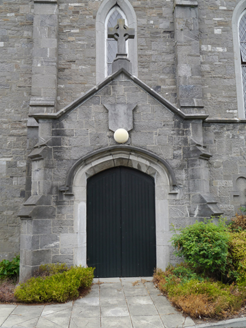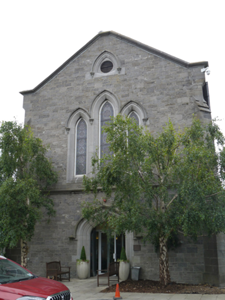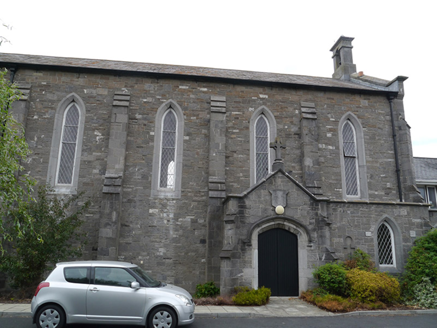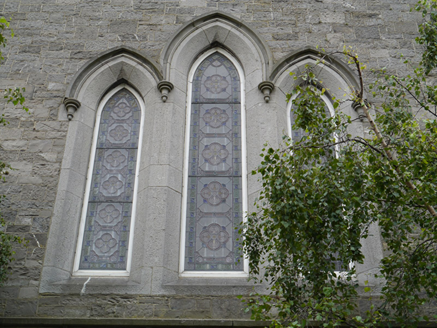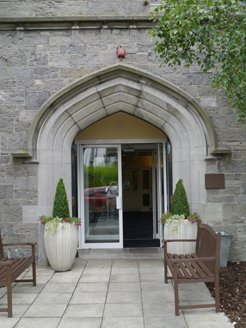Survey Data
Reg No
50130113
Rating
Regional
Categories of Special Interest
Architectural, Artistic, Social
Previous Name
St. Pappin's Church
Original Use
Church/chapel
In Use As
Nursing/convalescence home
Date
1845 - 1850
Coordinates
315597, 240202
Date Recorded
17/07/2018
Date Updated
--/--/--
Description
Attached Gothic Revival gable-fronted former Catholic church, built 1846-8, having five-bay long walls. Now having nursing home of c. 1990 attached. Pitched slate roof with angled ridge tiles, cast-iron rainwater goods and limestone belfry to east end having copper bell. Snecked ashlar limestone walls with limestone nave and corner buttresses, stringcourses and gable copings. Lancet windows with chamfered limestone surrounds and containing timber frames, grouped in three to west gable with hood-mouldings and with oculus above, latter louvered and set within triangular recess and hood-moulding; single-light to side walls with diamond-leaded lights. Four-centred-arch main doorway to gable-front with chamfered reveals, hood-moulding and timber battened double-leaf door; secondary entrance set in projecting limestone porch to south elevation with corner buttresses and gable surmounted by cross finial, having four-centred-arch doorway with chamfered reveals, hood-moulding and double-leaf timber battened door. Interior has ribbed vaulted plaster ceiling with decorative bosses. Otherwise renovated. Surrounded by carpark to south and west with enclosed residents' garden to north and extending into later nursing home to east.
Appraisal
A simple Gothic Revival former Catholic church, built on the land of Compton Domville for Rev. Cornelius Rooney. Its exterior is enhanced by pleasant cut stone surrounds and details and by its generous main doorway. The building was funded by a Santry publican, James Coughlan and designed by the Dublin church architect Patrick Byrne. Although largely renovated internally, the building retains most of its external details, character and form and remains a key community building. It is of interest as part of Byrne's oeuvre in Dublin, and provides socio-historical context within the Ballymun Road area.
